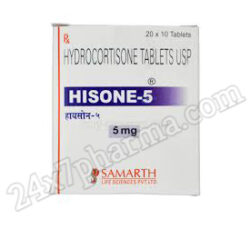Hormonal Therapy
Showing 1–16 of 26 resultsSorted by latest
Siphene 100mg Tablet 30’S
Original price was: $25.$21Current price is: $21.Susten 200mg Injection 2ml (3 Ampoules)
Original price was: $43.$36Current price is: $36.Progynova 2mg Tablet 28’S
Original price was: $26.$22Current price is: $22.Naturogest 200mg Capsule 10’S
Original price was: $21.$18Current price is: $18.Premarin 0.625mg Tablet 28’S
Original price was: $41.$34Current price is: $34.Susten 200mg Capsule 10’S
Original price was: $18.$15Current price is: $15.Naturogest 100mg Capsule 20’S
Original price was: $23.$19Current price is: $19.Danogen 200mg Capsule 10’S
Original price was: $27.$23Current price is: $23.Humog 75Iu Injection
Original price was: $41.$34Current price is: $34.Danogen 100mg Capsule 10’S
Original price was: $19.$16Current price is: $16.Proluton 500mg Injection(Depot) 2ml
Original price was: $19.$16Current price is: $16.Ovunal SC 5000IU Injection 1’s (3 Ampoules)
Original price was: $25.$21Current price is: $21.Humog 150IU Injection
Original price was: $74.$62Current price is: $62.Hisone 5mg Tablet 30’S
Original price was: $7.$6Current price is: $6.Danogen 50mg Capsule 30’S
Original price was: $27.$23Current price is: $23.Fertomid 25mg Tablet 30’S
Original price was: $13.$11Current price is: $11.ABOUT HORMONE THERAPY
Hormone therapy is a form of therapy that is used for the treatment of different types of cancer by removing, blocking, or adding specific hormones to the body. Hormone therapy is also known as hormonal therapy, anti-hormonal therapy, or endocrine therapy.
Hormones are chemical messengers produced by glands and are important for regulating different body functions. They travel from tissues to organs further controlling processes such as growth and development, reproduction, metabolism, and mood. These hormones are produced by specific glands such as the pituitary glands, adrenal glands, thyroid glands, pancreas, and reproductive organs.
BENEFITS OF HORMONE THERAPY
It changes the number of hormones in the body depending on the specific hormones being used and the individual’s health condition. The benefits include:
- Prevents the body from producing a hormone.
- Changing how a hormone acts in the individual’s body.
- Blocks the hormone from binding to cancer cells.
TYPES OF HORMONE THERAPY
It is classified into different types based on the hormones used, the method of administration, and the purpose of treatment. The different types include:
SURGERY AND RADIATION THERAPY
Surgery involves the removal of glands or organs to stop their hormone production or works against a hormone’s effects in the individual’s body.
On the other hand, Radiation therapy is used to destroy or damage hormone-producing tissue, thus stopping hormone production.
HORMONE DRUG THERAPY
A few medications affect how cells make hormones by stopping hormone-producing cells from creating hormones. Other drugs work against hormones or how they impact the body. Cancer cells fuelled by hormones have receptors on their surfaces that attach to the cancer cells allowing them to grow. The hormone drug therapy includes:
- Estrogen Therapy: This type of therapy is used to relieve symptoms of menopause, such as hot flashes, vaginal dryness, and mood swings. It can be administered orally, topically (as a cream, gel, or patch), or vaginally (as a cream, tablet, or ring).
- Progestin Therapy: Progestin is a synthetic form of progesterone and is a female hormone that is often used in combination with estrogen therapy in women by helping protect the uterus from the effects of estrogen, such as endometrial hyperplasia.
- Testosterone Therapy: Testosterone therapy is used to increase the testosterone levels in individuals with low testosterone levels. It is commonly used to treat symptoms of low testosterone in men, such as decreased libido, fatigue, and muscle loss.
- Thyroid Hormone Therapy: It involves the use of synthetic thyroid hormones (such as levothyroxine) to replace or increase the hormones produced by the thyroid gland. It is used to treat hypothyroidism and helps in preventing the recurrence of thyroid cancer.
- Anti-androgen Therapy: Anti-androgens are drugs that block the effects of androgens which is a type of male hormone. They are used to treat conditions such as prostate cancer.
Hormone levels can control different types of cancer in the human body. The different types of cancer that can be treated with the help of breast cancer, prostate cancer, thyroid cancer, uterine cancer, adrenal cancer, pituitary gland tumor, and others.
Top Selling Products of Hormone therapy
- Deviry 10mg Tablet
- Progynova 2mg Tablet
- Premarin 0.625mg Tablet
- Susten 200mg Injection 2ml
- Testoviron Depto 250mg Testosterone Enanthate Injection
Furthermore, there are different ways in which it can be given to individuals such as orally, can be administered through injections, and surgical ablation. It recommended depends on the type of cancer and the hormones used. Thus, it is important to discuss the risks and benefits of hormone therapy with your doctor before starting treatment, as it may not be suitable for everyone and can have side effects.
















